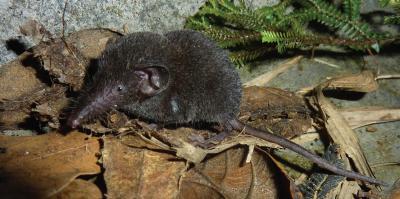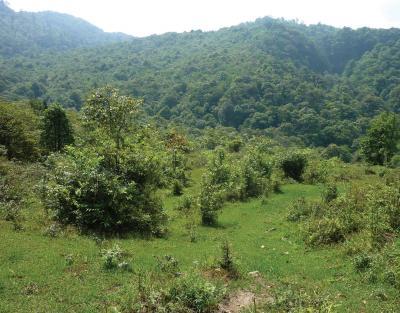The white toothed shrew genus Crocidura is known as the largest mammal genus, with more than 180 species distributed around the world. A recent genetic analysis of the white toothed shrew fauna of Vietnam revealed the misinterpretations of previous morphological studies of the species, including the description of a new species of these very small mammals. The study was published in the open access journal ZooKeys.
Describing new mammal species is an unusual event nowadays when mammal fauna has been by and large already thoroughly studied by zoologists during the previous centuries. Molecular analysis, however, presents an additional tool for the complex cases of morphological analysis, thus helping scientists to uncover previous mistakes, and even to find previously overlooked separate species.

This image shows the new white toothed shrew species Crocidura sapaensis.
(Photo Credit: Alexei V. ABRAMOV, Zoological Institute, Russian Academy of Sciences, Universitetskaya nab., 1, Saint-Petersburg, 199034, RUSSIA, e-mail: a.abramov@mail.ru)
The new species Crocidura sapaensis is a dark-grey and relatively small white toothed shrew, named after the Sa Pa District in Vietnam, where it was collected. During the study, the animals were found dwelling in a variety of the beautiful habitats in the vicinity of Tram Ton Station of Hoang Lien National Park, including mixed evergreen forest, banks of small streams and open grassy glades.
Previously confused with another species featured in this study (C. wuchihensis), the new species remained long unrecognized due to the great extent of morphological resemblance between the two. Judging solely by the looks, however, proved to be insufficient for the accurate recognition of species, with molecular analysis now offering scientists an opportunity to look under the surface.

This image shows the new white toothed shrew species Crocidura sapaensis.
(Photo Credit: Alexei V. ABRAMOV, Zoological Institute, Russian Academy of Sciences, Universitetskaya nab., 1, Saint-Petersburg, 199034, RUSSIA, e-mail: a.abramov@mail.ru)
"Our study concerns three species of Crocidura occurring in Vietnam, namely C. attenuata, C. tanakae and C. wuchihensis, and we came across an undescribed fourth species revealed by molecular analysis. While the molecular studies of Vietnamese material confirmed some of the results of the contemporaneous morphological studies, a number of anomalies were equally revealed, indicating the presence of several morphologically similar but molecularly distinct taxa.", explains Paulina Jenkins, a zoologist at London's Natural History Museum, about the horizons of the molecular analysis.

This image shows a typical habitat from the area where Crocidura sapaensis was found in Vietnam.
(Photo Credit: Alexei V. ABRAMOV, Zoological Institute, Russian Academy of Sciences, Universitetskaya nab., 1, Saint-Petersburg, 199034, RUSSIA, e-mail: a.abramov@mail.ru)
Source: Pensoft Publishers